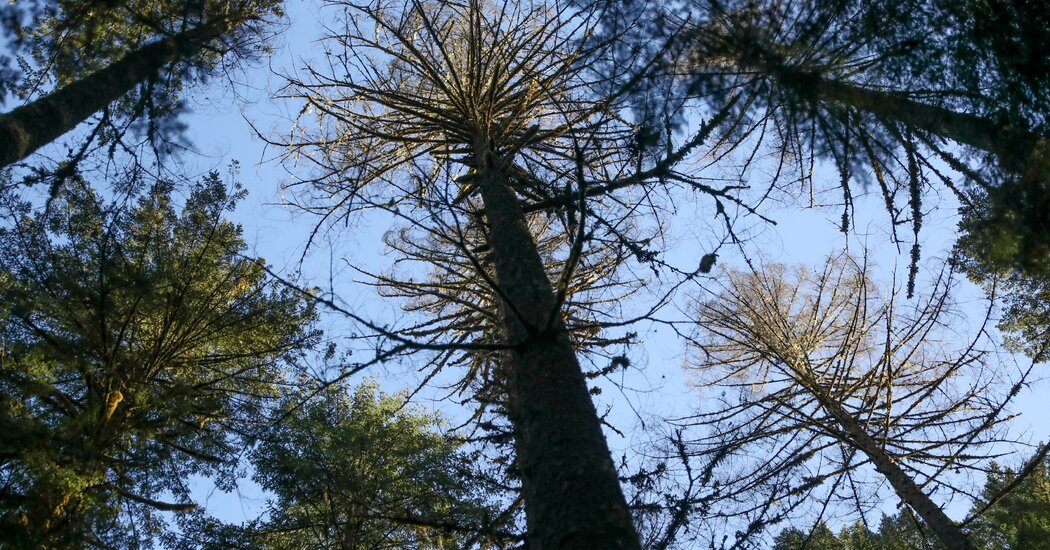Officials in Oregon say they need to cut trees, including some healthy ones. The reaction shows how complex land management has become as forest health declines.
Across a patch of the Pacific Northwest, one of North America’s most important tree species is dying at an alarming rate. This spring, as in the past several years, the needles on Douglas firs are yellowing, turning red and then dropping to the ground in forests across southwestern Oregon.
Experts blame a combination of factors, including insect attacks, drought and increased temperatures caused by climate change. Decades of fire suppression have exacerbated problems by disrupting the natural balance of ecosystems.
“The droughts and heat and climate change are killing trees widely, and there’s no clear way to put that genie back in the bottle,” said Rob Jackson, an ecologist at the Doerr School of Sustainability at Stanford University who is researching the ways climate change affects forests and grasslands. “We are priming our forests to die.”
The crisis in Oregon shows the critical importance of forest management as climate change alters the natural world. Foresters say that, in many cases, they need to cut down Douglas firs, whether dead or alive, in order to minimize wildfire risk, promote forest health and help ecosystems adapt to the shifting climate. Their plans include selling some salvageable timber.
But those plans have touched a raw nerve with some environmentalists, who distrust government agencies and accuse them of favoring logging over conservation.
“I understand why environmental groups are suspicious, and they should be,” said Mindy Crandall, an associate professor of forest policy at Oregon State University. The federal agencies “didn’t listen to society for a little bit too long.”
